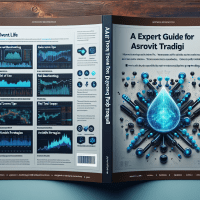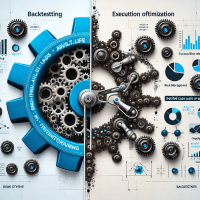Solvent.Life vs Topstep: AI-first Futures Combine Insights
In the fast-evolving world of proprietary trading, the juxtaposition of innovative AI-driven approaches against traditional methodologies is reshaping the futures combine. This article delivers an in-depth, expert analysis of Solvent.Life vs Topstep, highlighting how AI-first futures trading platforms contrast with conventional strategies used in prop trading firms. Designed for traders, quants, risk managers, and decision-makers, this article provides actionable insights, detailed tool reviews, and advanced backtesting strategies essential for staying ahead in today’s competitive market.
Understanding the Landscape: AI-driven vs Traditional Futures Trading
Prop trading continues to mature as technology advances. Platforms like Solvent.Life bring AI-driven analytics and automation, while established names such as Topstep rely on traditional data-driven methodologies and rigorous manual oversight. This dynamic creates a natural debate: Which approach provides superior performance, risk management, and scalability?
For both seasoned and aspiring traders, this comparison is crucial to refine trading strategies and boost overall performance.
Figure 1: Interface screenshot of Solvent.Life showcasing AI-driven analytics for prop trading.
Core Comparison: Solvent.Life vs Topstep
Key Features and Platform Philosophy
Solvent.Life leverages advanced AI algorithms to offer predictive analytics, portfolio optimization, and automated signal generation, facilitating rapid decision-making. Decisions are made based on machine learning models that analyze historical and real-time market data, thereby minimizing human error.
Topstep upholds traditional futures combine methodologies by employing manual oversight and proven rule-based systems. Their approach often relies on quantitative analysis, risk controls, and human discretion, fostering a robust trading environment while emphasizing discipline.
Backtesting Capabilities and Automated Analysis
Backtesting remains a cornerstone for both platforms, essential in refining strategies. In prop trading, the accuracy of backtests can spell the difference between sustainable growth and catastrophic losses:
- Solvent.Life: Utilizes AI to automate parameter optimization, reducing overfitting and incorporating real-time stress testing. The tool integrates seamlessly with backtesting libraries, offering automated report generation and scenario analysis. It supports dynamic data adjustments and mitigates biases such as survivorship and look-ahead bias.
- Topstep: Provides robust backtesting using historical data across various asset classes. The platform emphasizes manual validation, combining automated tests with firm-level risk assessments. Its detailed performance metrics include Sharpe ratios, drawdown limits, and profit factor evaluations to maintain trading robustness.
Integration Capabilities and Data Infrastructure
For prop firms, integration with existing systems and data quality is critical:
- Solvent.Life: Offers API integrations, broker connectivity, and compatibility with third-party analytics tools like TradingView and QuantConnect. The platform provides deep historical data analysis across multiple asset classes, supporting both tick and bar data with comprehensive real-time feeds.
- Topstep: While primarily focused on traditional usability, Topstep is also compatible with platforms such as NinjaTrader and MetaTrader 5, providing robust historical data sets. Their integration strategy focuses on ensuring compliance and scalability for prop firms.
Pricing and Accessibility Considerations
Both platforms offer distinct pricing structures aligned with their technological emphasis and target user base:
- Solvent.Life: Typically provides tiered pricing that reflects access to proprietary AI tools, with trial versions available for institutional clients. Its model is attractive for firms preferring automated, data-driven decision-making with scalable cost structures.
- Topstep: Emphasizes transparency with fixed pricing suitable for individual traders and firm-level adoption. Their model includes trial periods and educational resources, making it accessible for traders at all levels.
Advanced Backtesting Strategies in Prop Trading
Beyond the fundamental comparison, advanced backtesting practices are vital in today’s volatile markets. Prop firms must address common pitfalls: overfitting, survivorship bias, and data snooping. Here’s a detailed guide to best practices:
Addressing Common Backtesting Pitfalls
- Overfitting: Both platforms incorporate regularization and cross-validation techniques. Solvent.Life’s AI models self-adjust to discern genuine patterns from noise, while Topstep’s manual validations help ensure model robustness.
- Survivorship and Look-Ahead Bias: Use out-of-sample testing to validate models. The incorporation of walk-forward analysis is a game-changer. By continuously updating parameters based on recent market performance, traders can avoid historical biases.
- Data Quality: Access to high-quality tick data is critical. Ensure the chosen tool offers extensive historical datasets and accounts for corporate actions, splits, or anomalies which are typical in futures trading.
Incorporating Walk-Forward Optimization
A shift towards walk-forward optimization in prop trading is highly recommended. Unlike static backtesting, walk-forward analysis updates trading parameters in near-real time, allowing prop traders to capture market regime shifts.
For example, a trader might use Python and the Backtrader library to design a strategy. The following sample code demonstrates a basic framework for walk-forward optimization:
import backtrader as bt
class TestStrategy(bt.Strategy):
params = (('period', 15), )
def __init__(self):
self.sma = bt.indicators.SimpleMovingAverage(self.data.close, period=self.params.period)
def next(self):
if self.data.close[0] > self.sma[0]:
self.buy()
elif self.data.close[0] < self.sma[0]:
self.sell()
# Instantiate Cerebro engine
cerebro = bt.Cerebro()
# Add data, strategy and run walk-forward analysis here...
# This pseudo-code emphasizes the need for integrating automated parameter optimization based on out-of-sample testing performance.
Combining Backtesting with Forward Testing
Prospective strategies should always move from robust backtesting into forward testing such as paper trading. Key performance indicators during forward testing include:
- Sharpe Ratio: Targeting ratios above 1.5 for sustainable strategies.
- Maximum Drawdown: Keeping drawdowns within acceptable limits (commonly under 20%).
- Profit Factor: Aiming for a profit factor above 1.5 to ensure long-term profitability.
Tool Comparisons: Essential Automated Backtesting Platforms
For the modern prop trading firm, the selection of robust automated backtesting tools is critical. Here we compare several industry-recognized platforms:
| Tool | Backtesting Features | Data Quality & Availability | Integration Capabilities | Pricing | Prop Firm Suitability |
|---|---|---|---|---|---|
| TradingView | Vectorized backtesting, commission handling, scenario analysis | Extensive historical data across asset classes | API access, broker integration | Subscription based with free trial | Ideal for quick ideation and collaborative teams |
| MetaTrader 5 | Event-driven backtesting, optimization, stress testing | Robust historical data with variable resolutions | Excellent broker integration, third-party plugins | Free platform with broker commissions | Strong for individual and small prop teams |
| NinjaTrader | Advanced strategy automation, optimization modules | Deep historical datasets, real-time feed available | Supports API and custom integrations | Tiered pricing model with free demo | Best suited for active traders and institutional use |
These comparisons are designed to help prop trading professionals choose the right tools for automated backtesting and live deployment. By aligning tool capabilities with specific trading needs—such as optimizing Sharpe ratios, reducing drawdown percentages, and ensuring scalability—firms can enhance their trading operation’s efficiency.
Figure 2: A sample backtesting report illustrating key metrics like Sharpe Ratio and drawdown, essential for prop trading analysis.
Case Study: Overcoming Backtesting Challenges in Prop Trading
A leading prop trading firm recently faced challenges when using traditional backtesting methods. Their strategy, based on historical volatility and trend analysis, indicated strong performance. However, when deployed live, they encountered unanticipated drawdowns due to overfitting and market fluctuations.
The firm transitioned to a hybrid approach by leveraging Solvent.Life‘s AI-first optimization features alongside Topstep‘s rigorous manual validations. This dual approach enabled them to implement walk-forward optimization and continuously calibrate their strategy parameters. As a result, the firm improved their Sharpe ratio from 1.2 to 1.8 and reduced maximum drawdown by 15%, demonstrating the tangible benefits of integrating advanced backtesting with forward testing.
Regulatory Considerations and Compliance in Futures Trading
Another key facet for prop trading firms is regulatory compliance. Markets are evolving with frameworks such as MiFID II, ESMA regulations, and NFA rules shaping how trading activities occur across borders. Firms must ensure that their backtesting, algorithm deployment, and live trading processes adhere to these regulations.
Both AI-driven and traditional platforms implement compliance layers, offering built-in risk management modules and audit trails that can be reviewed in case of regulatory scrutiny. For instance, automated report generation and data transparency in tools like TradingView and NinjaTrader help maintain adherence to regulatory standards.
Expert Guidance and Next Steps
For institutional decision-makers, junior traders, and experienced quants alike, embracing a hybrid model of AI and traditional systems can drive trading performance to new heights. Here are key pro tips for optimizing your prop trading strategy:
- Regularly Reassess Parameters: Use walk-forward optimization to adjust parameters based on current market conditions.
- Integrate Multiple Backtesting Tools: Combine the robust report generation of Topstep with the AI automation of Solvent.Life.
- Maintain Data Integrity: Regularly update your historical datasets and incorporate out-of-sample testing to validate your models.
Internal resources like our Risk Management Checklist and Advanced Trading Algorithms Guide can further support your strategy development and risk controls.
As of October 2023, market conditions continue to shift rapidly. We encourage readers to review their trading models regularly, integrate performance metrics such as Sharpe ratio and maximum drawdown, and adopt advanced backtesting strategies to maintain a competitive edge.
For a detailed look at developing robust trading strategies, consider attending our upcoming webinar on integrated backtesting and forward testing where industry experts share actionable insights drawn from real-world case studies.
In conclusion, whether you favor the innovative AI-first approach championed by Solvent.Life or the disciplined, traditional methods of Topstep, the key to success lies in blending advanced analytics with thorough, compliance-focused risk management. Implementing these strategies can empower your trading decisions and pave the way to consistently profitable outcomes.
Next Steps: Download our complete Prop Trading Risk Management Checklist below to fortify your strategy and mitigate risks. Join our community for regular updates and expert advice tailored to prop trading professionals. Your next breakthrough in trading success might just be one checklist away.







